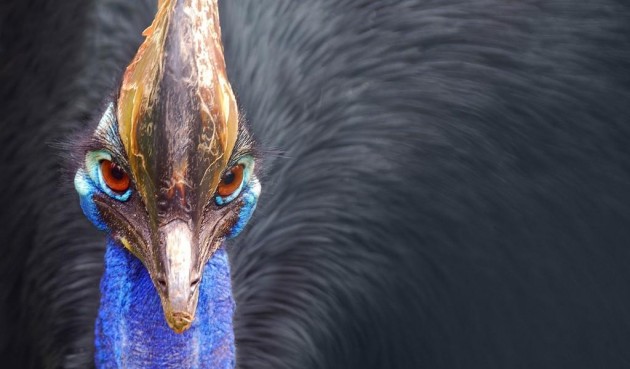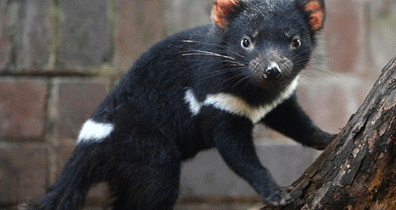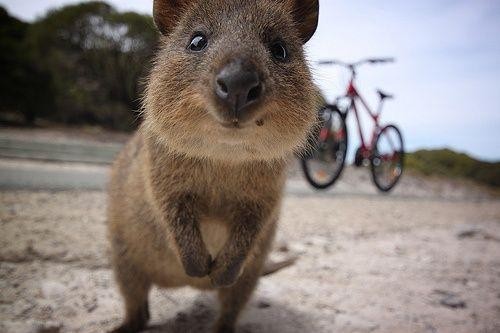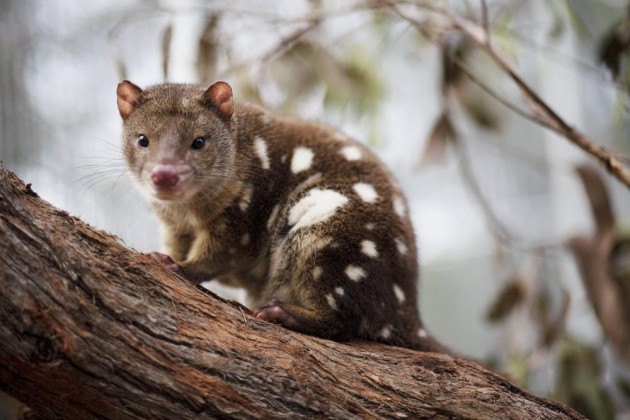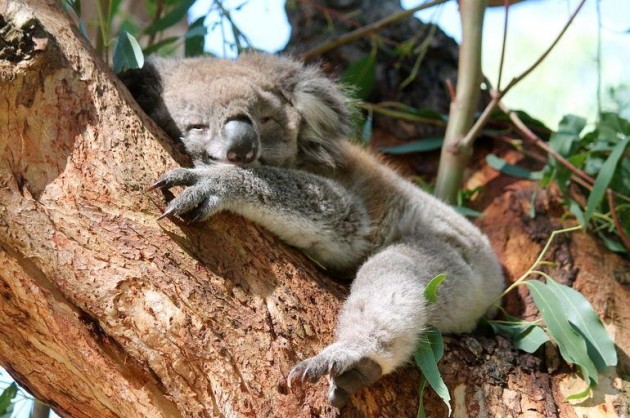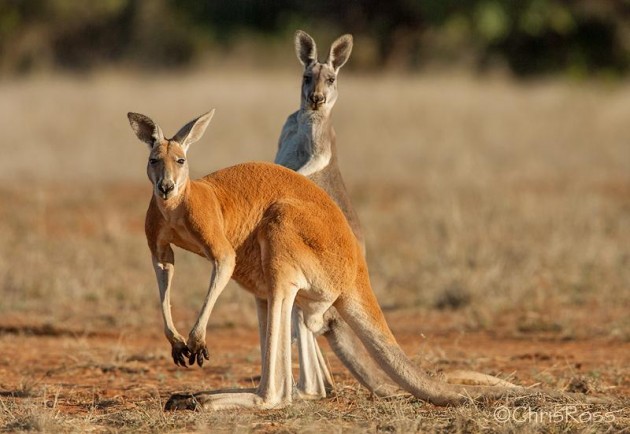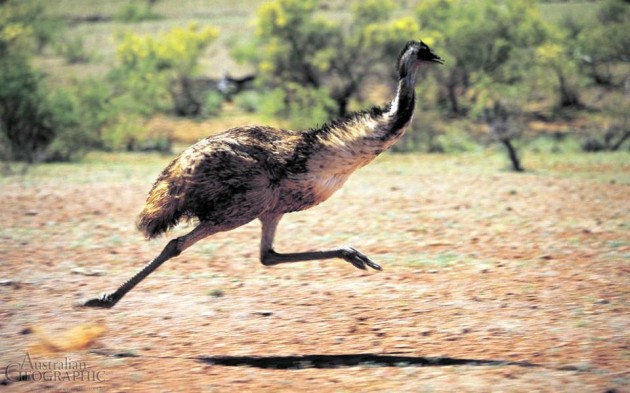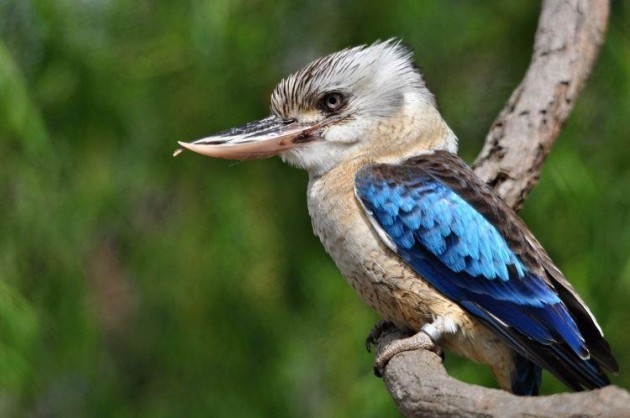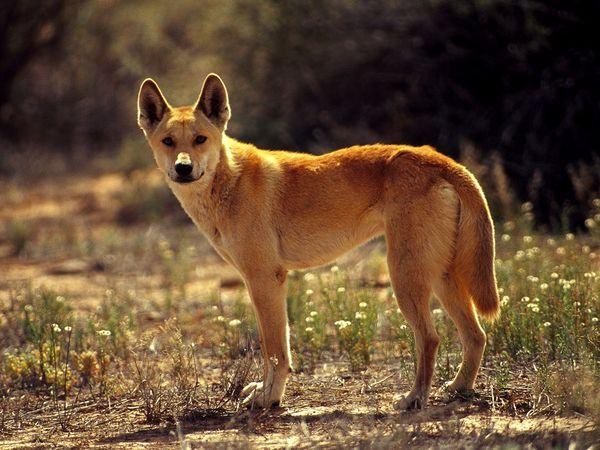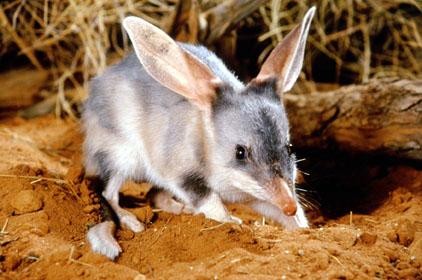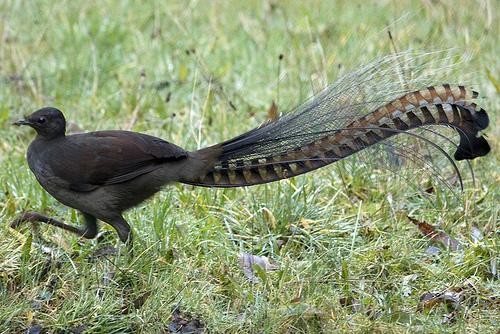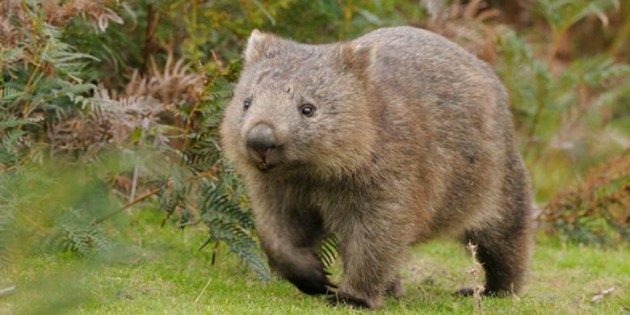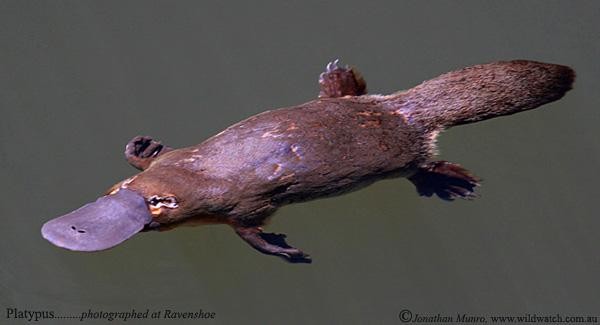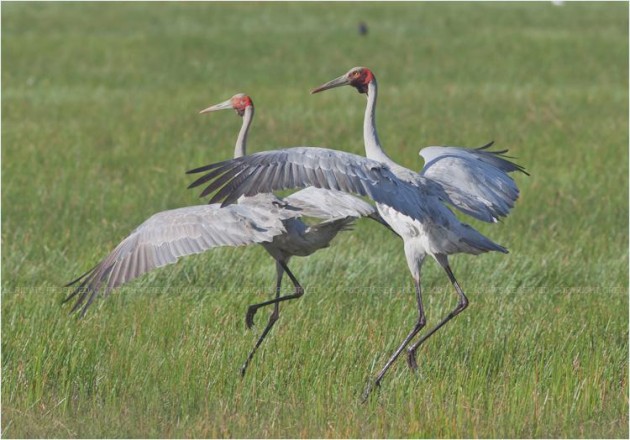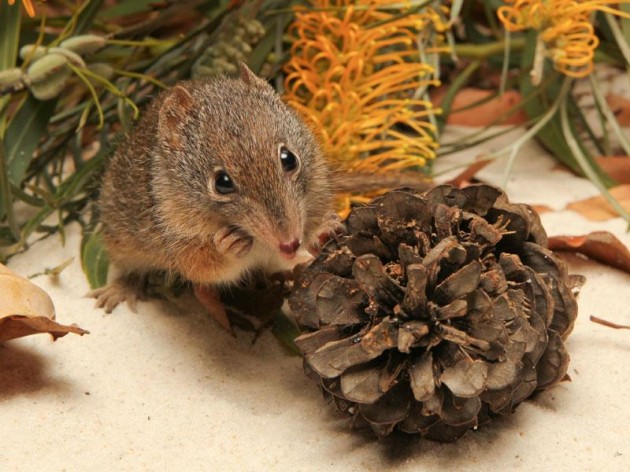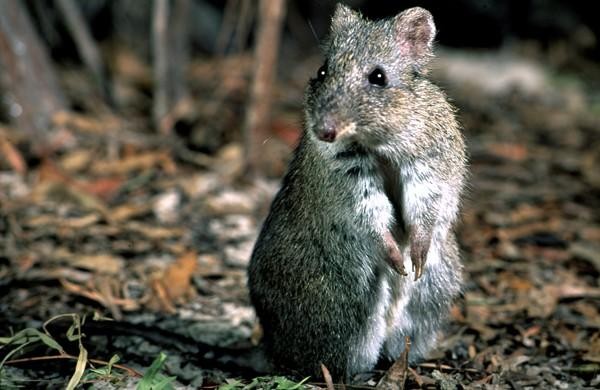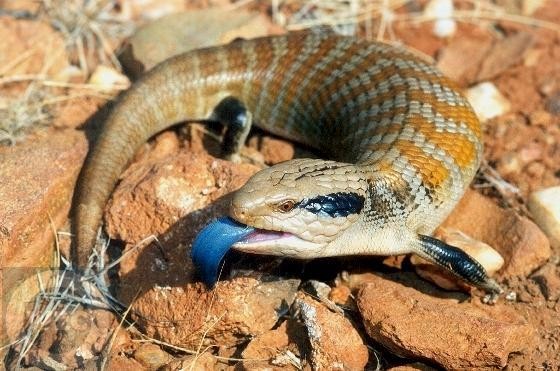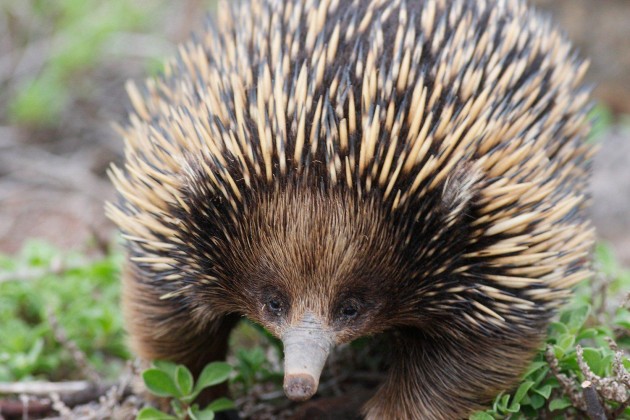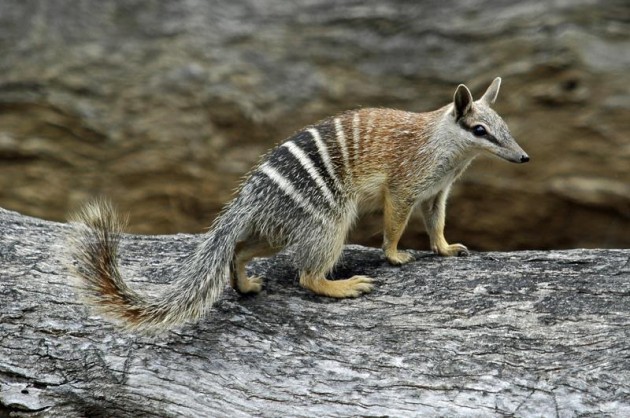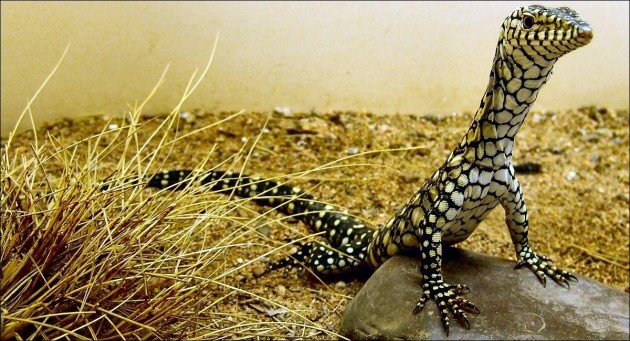Australia’s Must-See Animals
Australia is home to some of the deadliest, most fascinating and exclusive animals. But do you know which animals they are? Not all of them are out to get you and not all of them are actually easy to spot.
No worries though, check out this list of 20 must see animals while you’re down under and you’ll be all set! From birds that can smize to mammals that may be part Super Saiyan, these all creatures you don’t want to miss!
1. Cassowary
Cassowary? More like sassowary because this bird’s got attitude. It’s probably because they know they’re the third largest and second heaviest living bird in the world. Or maybe they know they can take you out if you provoke them with their claws and beak. Regardless of the reason, their smize game will leave even Tyra Banks intimidated – and it’s all thanks to their bright, bluish purple feathers and piercing red eyes.
They’ve even got casques (the horn-like crests on their heads) that look like crowns! It’s almost like they’re the fashionable version of ostriches and emus. I guess when you come out of a bright green egg, you just can’t help but be the royalty you were meant to be.
Their sass usually comes on when you’re in their territory; they’re very solitary so they need their space, making them difficult to spot in their natural habitat. If the sass isn’t uncalled for though, they’re very shy in nature and will leave you alone. These majestic, fruit-munching birds are definitely worth a visit to the wildlife park!
2. Tasmanian Devil
If your eyes can keep up with these speedy creatures, you’ll know you’ve spotted the Tasmanian devil because their black fur, strong odour and muscular build. Most devils have a white marking around it’s front but if you see one that doesn’t, you’ve spotted a rare one! Only 16% of wild devils don’t have white patches.
However, just because they’re the largest living carnivorous marsupials, it doesn’t mean they don’t need to be protected. They’re actually facing major population declines because of predation, being run over and facial tumour disease. But you can help our favourite Looney Tunes character by visiting them in wildlife parks and raising awareness!
3. Quokka
This marsupial is may well be the friendliest one on this list. They’ll curiously come up to you, even when in their natural habitats of Western Australia. They may even become your best friend and if they do, their nocturnal nature is sure to cheer you on with that essay at 4am.
When you’re struggling with a healthy diet, they’ll teach you their herbivorous ways. If somebody does you wrong, they’ll whip out their big feet, pointy claws and sharp teeth and take care of business. They may be the “world’s happiest animal” but with them as your best friend, you could be “world’s happiest human”! Too bad it’s illegal to have them as pets though. But that’s probably for the best because if it weren’t, we’d abandon all responsibilities to hang out with these adorable critters!
4. Quoll
Stop everything and quoll your friends because I’ve found your spirit animal. Yup, it’s the quoll. They’re cute, they’re vicious when need be and they’re most productive at night (nocturnals unite!). I mean, isn’t that basically all of us?
They’re solitary creatures though so when they need their space, they best get it! You never know what these carnivorous marsupials might do! Unfortunately, the spotted-tail and the northern quolls are endangered because of illegal hunting, predation, loss of habitat and so on. It’s tragic to hear about any animal being endangered but there are some wildlife parks that are working to recover the situation. Visiting these parks can actually help fund their recovery plans so to see this furry friend, I’d say leave their natural habitats be. I’m sure the quolls will wiggle their long tails and pink snouts in appreciation!
5. Koala
If you feel like the quoll isn’t quite your spirit animal, it might be because you’re a koala. This furry marsupial sleeps around 16 to 18 hours and eats around 3 to 5 hours per day – excuse me, hi yes, I’d like to become a full-time koala. Where do I sign up? Just look at how content this koala looks in the picture!
Be careful though, koalas may seem slow but they’re also very territorial. If you come too close they might chase, bite and scratch you. If you want to hold one though, head to Queensland because it’s the only state you can legally hold a koala so make sure to visit a wildlife park there. Cairns Tropical Zoo has a “Koala Café” and it’s exactly what it sounds like. Cuddling a koala while enjoying your breakfast omelette? Ummm, yes please!
6. Red Kangaroo
They’re on Australia’s airline and Coat of Arms but have you seen them in real life? If not, you need to head to the open deserts and plains of Central Australia to see one of our most iconic creatures in their natural habitat. You’ll also find them in zoos and wildlife parks where there’s a higher chance to feed or pet one.
Be careful though, at a glance these jumpers look laid back but check out their guns and you’ll see how buff they actually are! No need to ask if this ‘bro’ lifts because you know he does. One wrong move and they’ll hop right over and push, shove and scratch you! Don’t worry though, these marsupials, like any other, mean well so as long as you do too, they just might let you sit in their pouches! (Okay, probably not but you get me! Just be nice to them!)
7. Emu
Proudly helping the red kangaroo on the other side of the Coat of Arms is the emu. Emus are the largest native bird to Australia and the second largest bird (the ostrich coming first) alive in the world. You’ll find them in savannahs and dry forests all over Australia and in wildlife parks as well. They’ll most definitely approach you if you’re near one only because they’re very curious creatures.
They aren’t planning on hurting you though; they’re just coming over to see what’s up. Emus are sometimes known to poke animals and run away just to see how they react! Now how many times have our friends done that to us? More importantly, how many times have we done that to our friends? I guess we’ve all got a little emu in us!
8. Kookaburra
If you ever hear a monkey-like call in a monkey-less place, it’s most likely a kookaburra. Their original name, “guuguubarra”, was given to them because that was what they sounded like to the Wiradjuri people. You can find almost them anywhere with tall trees, from forests to arid savannahs to suburban areas. You’ll never guess from their echoing calls but kookaburras are actually small birds!
Their calls are loud and lengthy because they’re marking their territory – if you can hear it, you’re in it! They’re not known to attacking humans but these carnivorous flyers are known to attack and feast on mice, snakes, insects and even other birds!
9. Dingo
It might be a tiny bit difficult to come close to this one in its natural habitat. That’s because dingoes are the largest terrestrial predators in Australia. If you’re still keen to spot one naturally (but really, be careful), you’ll find them in forests, wetlands and deserts of eastern, North and Central Australia, even in some Asian countries as well. If you do spot them in their natural habitats, don’t get too close to them because they’re territorial and carnivorous. Not a very inviting combo is it?
These wild dogs have reddish brown fur to camouflage them when they’re active during dusk and dawn too so you might not even see them coming! Like many other canine species, they form packs, especially to hunt a larger prey, so really if I haven’t said it already: be careful!
10. Bilby
This big-eared creature is sure to burrow its way to your heart with their cuteness and excellent digging skills. You’ll find them in Western Australia and the Northern territory but these cute burrowers are on its way to being endangered. That’s why, like the quoll, I’d recommend seeing them in wildlife parks or zoos where they’re bred in captivity and re-establishing them. You don’t want the Easter Bilby to disappear do you?
Easter Bilby is the Australian alternative to the Easter Bunny introduced to raise awareness of these marsupials. If that’s not the cutest thing you’ve ever heard, I don’t know what is!
11. Lyrebird
You know when your siblings do that annoying thing where they repeat everything you say? Well, lyrebirds do that for a living. And they do it really well. It’s because they’ve got a more complex and muscular syrinx, which is the bird’s vocal organ, compared to most birds. They’ll mimic other birdcalls as well as natural sounds, such as tree falls and dingo howls, and artificial sounds like a camera shutter.
They do it to scare predators, warn each other and attract mates and preys. Let’s be honest though, they probably do it to annoy their siblings too. Nothing says you’ve won an argument more than when you mock their words AND their voices!
Not only do they sound cool (literally and figuratively), they’re also known for their long feather tails, especially the male ones. You’ll most likely spot them on the ground as they’re not the best fliers and have strong feet appropriate for trudging. I mean, how fascinating can this bird get?! If we’re talking bird levels, lyrebirds are probably on level 1000.
12. Wombats
They might as well be called “wonbats” because they’ll definitely have won your heart once you’ve seen them! These herbivorous balls of fur have powerful claws to dig burrow systems (and give long hugs) and huge teeth to gnaw on hard crops (and give goofy smiles). Sadly, wombats aren’t seen very often because they’re nocturnal and only ever come out on cloudy days. They will leave behind an obvious trail of faeces though.
You could say they’ve left you with drops of wisdom though because well, faeces are droppings, and a group of wombats is called a “wisdom”. Why? I’m not too sure but it almost makes sense because these they look like they’ve got life figured out! These humble looking creatures, in all their wisdom, will use violence as an answer if there’s ever an intruder though; so just make sure you aren’t it!
13. Platypus
Oh Australia, home to some of the weirdest, deadliest and questionably real animals. Platypuses/platypi are no excuse because they’re basically flat, furry mammals that lay eggs and are venomous. Yes, you read that right!
They’re one of five mammals that lay eggs and one of the few mammals that are venomous. Male platypuses secrete venom from their ankle spurs that can kill other animals and incapacitate humans. They’ve even got electroreceptors (the most sensitive ones out of all egg-laying mammals, I might add) to help hunt for prey. On top of all of that, platypuses look pretty weird too.
If Little Red Riding Hood ever saw one, the conversation would probably sound like this:
My, what duck-like bill you have! “To satisfy my carnivorous diet, my dear.”
My, what otter-like feet you have! “To swim swiftly as I hunt, my dear!”
My, what beaver-like tail you have! “To steer myself towards delicious prey, my dear!”
Scary yet fascinating, right? If there were ever an animal that cheated biology, it’d probably be the platypus.
14. Brolga
Also known as the Australian crane, the brolga is a tall, small-headed bird with a long beak and a slender neck. They’re actually very fierce yet majestic looking birds, especially with their classy black-tipped wings, silvery grey feathers and fiercely red patch on their heads. You’ll find them in all their natural glory in the in the wetlands of north Australia and the northern part of Western Australia.
Brolgas are very social creatures and often stick to their families, which make sense as they’re also very monogamous birds. They’re best known for their courtship dance where they bow, throw around grass, stretch out their wings and leap into the air with their partner. Look at how in sync they are in the picture!
Sometimes a flock of them will do it together lining up with their other half. I mean, birds falling in love and prancing around to show their faith and attraction? And sometimes doing it in a group where they’re all celebrating their newfound love, together?! If that doesn’t make you believe in love, I don’t know what will!
15. Dibbler
This furry marsupial is the epitome of what it means to be small and feisty. They’re known to chow down on lizards, birds and small mammals with their strong jaws and sharp teeth, and they manage to stay cute while hunting too, what with their unique white eye-rings. It’s definitely part of their fur and not make up because it just never gets smudged while on the hunt. Although, The Black Widow’s make up never seems to get smudged either…weird.
Anyway, you’ll most likely catch a piece of their action in Western Australia during dawn or dusk. In all their might though, dibblers are actually endangered. They were once believed to be extinct but were rediscovered. Now, there are projects going on to breed dibblers and releasing them. The Perth Zoo is one of the well-known zoos that takes part in this conservation project.
16. Potoroo
Ah, the potoroos. These rabbit-sized marsupials look like a combination of a rat and a kangaroo with their pointed nose, long hind feet, curved front claws, long tail and brown/grey fur. These marsupials are nocturnal, colonial and sadly, very endangered. In fact, the Gilbert’s potoroo is Australia’s most endangered animal and the world’s most endangered mammal.
The main reason potoroos are so close to extinction is because of predation and loss of habitat. It also doesn’t help that potoroos can reproduce only twice a year either, bearing each one at a time. Because they’re endangered, you’re better off going to the zoo or a wildlife park to see these sweet mini-kangaroos where they’re safe from foxes and are very well taken care of!
17. Blue-tongue Skink
Blue-tongue skinks have blue tongues (well, duh) and if they’re sticking them out at you, it’s not to show off the results of eating a blue bubblegum Zooper Dooper. It’s to scare their predators with their large heads and when they stick out their bright blue tongue, it’s a major threat. If that doesn’t work, they’ll flatten out their bodies to make themselves look bigger.
They are the largest predator of the skink family though so I wouldn’t stick around too long once they’ve stuck out their tongues. Zooper Doopers aren’t actually in blue-tongue’s diet (if you haven’t quite figured that out yet), they’re omnivores targeting slow animals and available plants. For all we know though, they don’t eat blue Zooper Doopers but who’s to say they don’t eat blue Jolly Ranchers!
18. Echidna
Like the platypus, echidnas have electro-sensors and are one of the five mammals that lay eggs. Even though sometimes they’re called the “spiny anteaters”, they actually aren’t related to anteaters at all. The name isn’t a misnomer though because echidnas do mainly only eat ants and termites with their long snouts. It’s because they haven’t got any teeth so they have to grind their tongues to the bottom of their mouths to chow down on those ants. I guess its difficult have a gourmet serving of meat when you’re toothless.
Echidnas are often compared to porcupines and hedgehogs as well because of their spines and abrasive fur. Honestly though, I wouldn’t mind giving them a hug – spikes and all – and the fact that they’re very solitary makes me want to hug them even more! Come to think of it, they’re like they’re the Super Saiyans (Dragon Ball reference anybody?) of the animal kingdom: spiked up, aggressive when need be and unique compared to others. Even Vegeta couldn’t reach their level.
19. Numbat
Moving on from the spiny anteaters, now we’ve got the banded anteaters – numbats! Numbats are rightfully known as the banded anteaters because one, their banded and two, they mainly termites with their sticky, narrow tongues.
Apart from their anteater qualities, they kind of look like squirrels with their long, bushy tail, round standing ears and beady eyes, but what distinguish numbats from other animals is the black stripes on their backs that fade off towards their heads. You may be able to naturally spot them in Western Australia (numbats are actually the emblem of WA) because they’re the only marsupial active during the day. Even so, they’re actually endangered species so the chances are rather low. You’re better off seeing them in wildlife parks that are working to reintroduce them where you can truly see how adorable they are and why we need to help save them!
20. Perentie
We’ve all got that one big friend that could take us out in one hit if they wanted but will never do such a thing because they’re actually the shyest little goofball. Well, that’s basically the perentie. Despite being the largest goannas in Australia and the fourth largest lizard on Earth, perenties generally avoid aggression. They usually lay flat and unmoving to hide or run from danger; they’re even known to retreat from human contact. But that doesn’t mean they’ll play the victim when they’re being attacked. No, they’ll use their long, powerful claws, strong jaws and teeth and heavy tail to show you who’s boss. Oh, did I mention that they’re venomous? Well, they are and they usually lunge at prey with their mouths open because that’s where their venom comes from.
If you wanted to see this friendly predator in the wild, you’ll find them in arid deserts of Western Australia, South Australia, Northern Territory and Queensland. But if you want to see them where it’s a 100% guarantee they won’t attack you, a lot of wildlife parks and zoos have them too!
An Animal Lover’s Paradise
How was that? Did this list scare you or did it fascinate you? If you’d rather stick to humans, don’t you worry; Australia isn’t just about animals. It’s home to some of the best in the world too! (Trust me, I’m an unbiased source!) Which one was your favourite?

Drop us your email so you won't miss the latest news.
